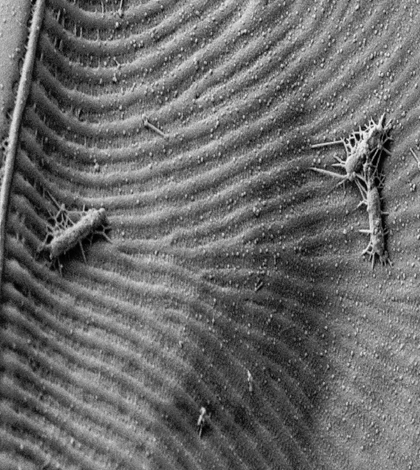Study Tracks Southern Ocean Microbial Life Competing For Precious nutrients

Electron micrograph of an Antarctic sea ice diatom, Amphiprora, with attached bacterial cells, illustrating the association between diatoms and bacteria in the Southern Ocean ecosystem. (Credit: Greg Wanger)
A study by researchers from the University of Rhode Island and the Marine Biological Laboratory in Woods Hole, Mass., has found that microbial populations in the remote Southern Ocean, specifically near McMurdo Station, are duking it out for precious nutrients.
The Southern Ocean is rich in nitrogen and phosphorous, however, the team found that marine phytoplankton and bacteria species are extremely sensitive to the amount of nutrients available to them, especially iron and vitamin B-12, which are lacking in the area. According to Erin Bertrand, who led the study while a researcher at Scripps Institution of Oceanography, they are dependent on even the most minor shifts in these nutrients’ availability over short time periods, down to the hour.
The team found that one species of phytoplankton were malnourished and iron and vitamin B-12 deficient. According to the National Science Foundation, a different group of bacteria, relying on the phytoplankton as food, appear to compete with the malnourished phytoplankton for vitamin B-12. All three groups of microbes compete for iron.
The findings led the team to observe that species’ populations are so sensitive that they are responding in a “boom and bust” pattern. Bertrand says this relationship between nutrient availability and population is critical to the ecosystem’s food cycle.
Top image: Electron micrograph of an Antarctic sea ice diatom, Amphiprora, with attached bacterial cells, illustrating the association between diatoms and bacteria in the Southern Ocean ecosystem. (Credit: Greg Wanger)




0 comments